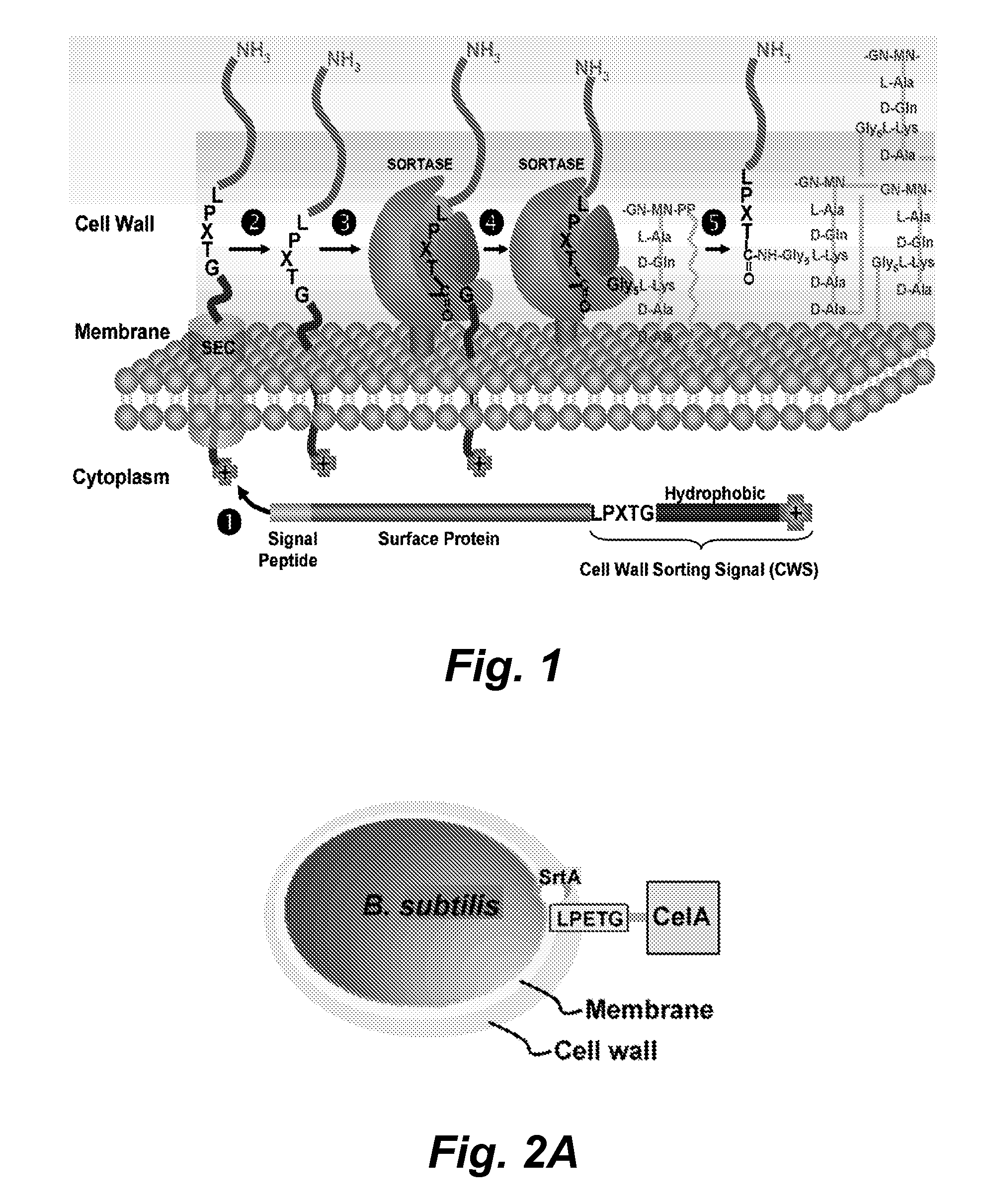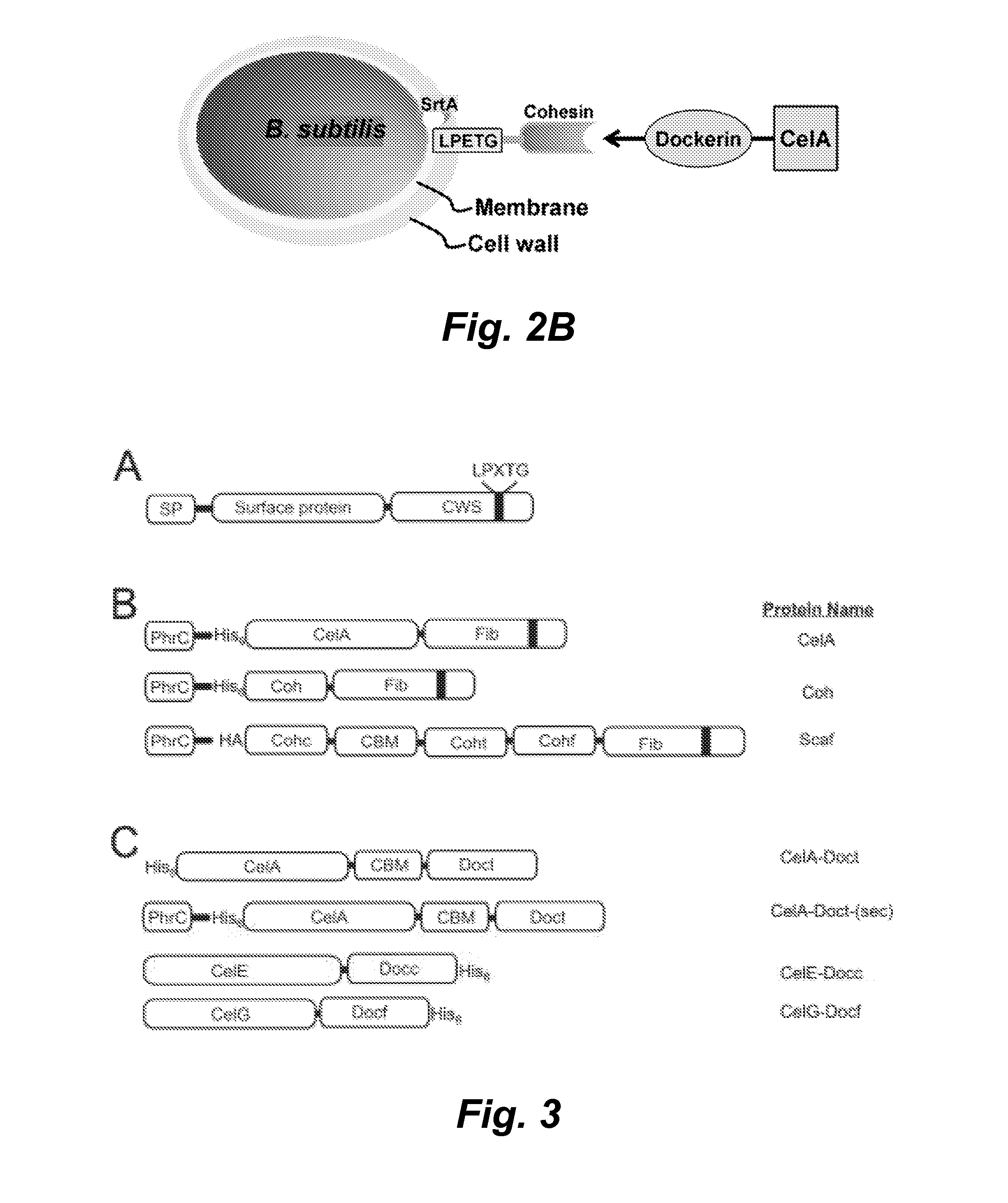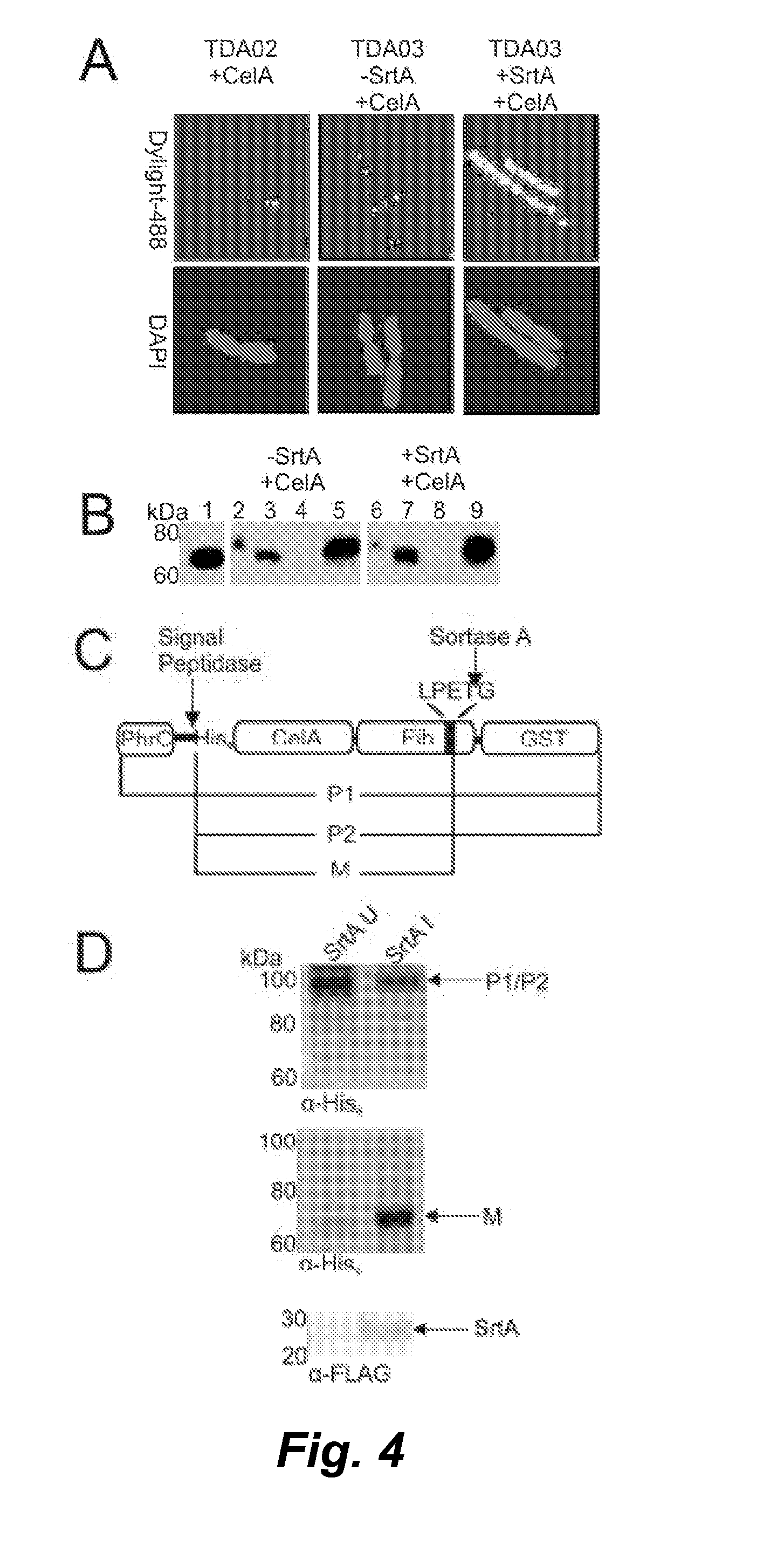Surface display of cellulolytic enzymes and enzyme complexes on gram-positive microorganisms
a technology which is applied in the field of surface display of cellulolytic enzymes and enzyme complexes on gram-positive microorganisms, can solve the problem of limiting the step in this process of lignocellulose into its component sugars
- Summary
- Abstract
- Description
- Claims
- Application Information
AI Technical Summary
Benefits of technology
Problems solved by technology
Method used
Image
Examples
example 1
Assembly of Minicellulosomes on the Surface of Bacillus subtilis
[0115]To cost-efficiently produce biofuels new methods are needed to convert lignocellulosic biomass into fermentable sugars. One promising approach is to degrade biomass using cellulosomes, which are surface displayed multi-cellulase containing complexes present in cellulolytic Clostridium and Ruminococcus species. In this study we created cellulolytic strains of B. subtilis that display one or more cellulase enzymes. Proteins containing the appropriate cell wall sorting signal are covalently anchored to the peptidoglycan by co-expressing them with the B. anthracis sortase A (SrtA) transpeptidase. This approach was used to covalently attach the CelA endoglucanase from C. thermocellum to the cell wall. In addition, a CelA-dockerin fusion protein was anchored on the surface of B. subtilis via non-covalent interactions with a cell wall attached cohesin module. We also demonstrate that it is possible to assemble multi-enz...
example 2
Recombinant B. subtilis Cells that are Capable of Degrading Industrially Relevant Biomass
[0150]The protein display system described herein was used to create recombinant B. subtilis cells that are capable of degrading industrially relevant biomass. Example 1 describes the use of the system to display cellulases that are active against acid-treated amorphous cellulose and carboxymethyl cellulose (a methylated, soluble form of cellulose).
[0151]This example describes engineering of the display system to degrade biomass. The reengineered cells display the minicellulosome shown in FIG. 8 and enable B. subtilis to degrade biomass, a capability that is lacking in native strains of this microbe. This was accomplished by displaying minicellulosomes that incorporate a different set of cellulase enzymes. The enzymes that are displayed include the Clostridium cellulolyticum endoglucanase Cel5A, Clostridium cellulolyticum endoglucanase Cel48F and the C. cellulolyticum exoglucanase Cel9E. These e...
PUM
| Property | Measurement | Unit |
|---|---|---|
| pH | aaaaa | aaaaa |
| pH | aaaaa | aaaaa |
| pH | aaaaa | aaaaa |
Abstract
Description
Claims
Application Information
 Login to View More
Login to View More - R&D
- Intellectual Property
- Life Sciences
- Materials
- Tech Scout
- Unparalleled Data Quality
- Higher Quality Content
- 60% Fewer Hallucinations
Browse by: Latest US Patents, China's latest patents, Technical Efficacy Thesaurus, Application Domain, Technology Topic, Popular Technical Reports.
© 2025 PatSnap. All rights reserved.Legal|Privacy policy|Modern Slavery Act Transparency Statement|Sitemap|About US| Contact US: help@patsnap.com



